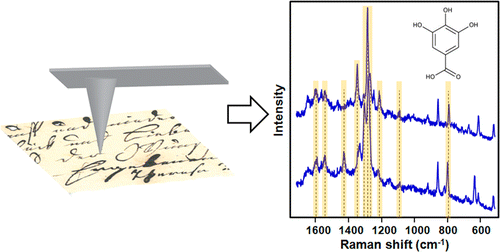New method to identify inks could help preserve historical documents

The inks on historical documents can hold many secrets. Its ingredients can help trace trade routes and help understand a work's historical significance. And knowing how the ink breaks down can help cultural heritage scientists preserve valuable treasures. In a study published in the Journal of the American Chemical Society, researchers report the development of a new, non-destructive method that can identify many types of inks on various papers and other surfaces.
Richard Van Duyne, Nilam Shah and colleagues explain that the challenge for analyzing inks on historical documents is that there's often very little of it to study. Another complication is that plant- or insect-based inks, as well as some synthetic ones, are composed of organic molecules, which break down easily when exposed to light. Current methods are not very specific or sensitive or can leave a residue on a document. To address these issues, the research team set out to develop a different way to analyze and identify historical inks.
They used the novel method, called tip-enhanced Raman spectroscopy (TERS), to analyze indigo and iron gall inks on freshly dyed rice papers. They also studied ink on a letter written in the 19th century. "This proof-of-concept work confirms the analytical potential of TERS as a new spectroscopic tool for cultural heritage applications that can identify organic colorants in artworks with high sensitivity, high spatial resolution, and minimal invasiveness," say the researchers.
More information: "Tip-Enhanced Raman Spectroscopy (TERS) for in Situ Identification of Indigo and Iron Gall Ink on Paper" J. Am. Chem. Soc., 2014, 136 (24), pp 8677–8684. DOI: 10.1021/ja5027612
Journal information: Journal of the American Chemical Society
Provided by American Chemical Society




















